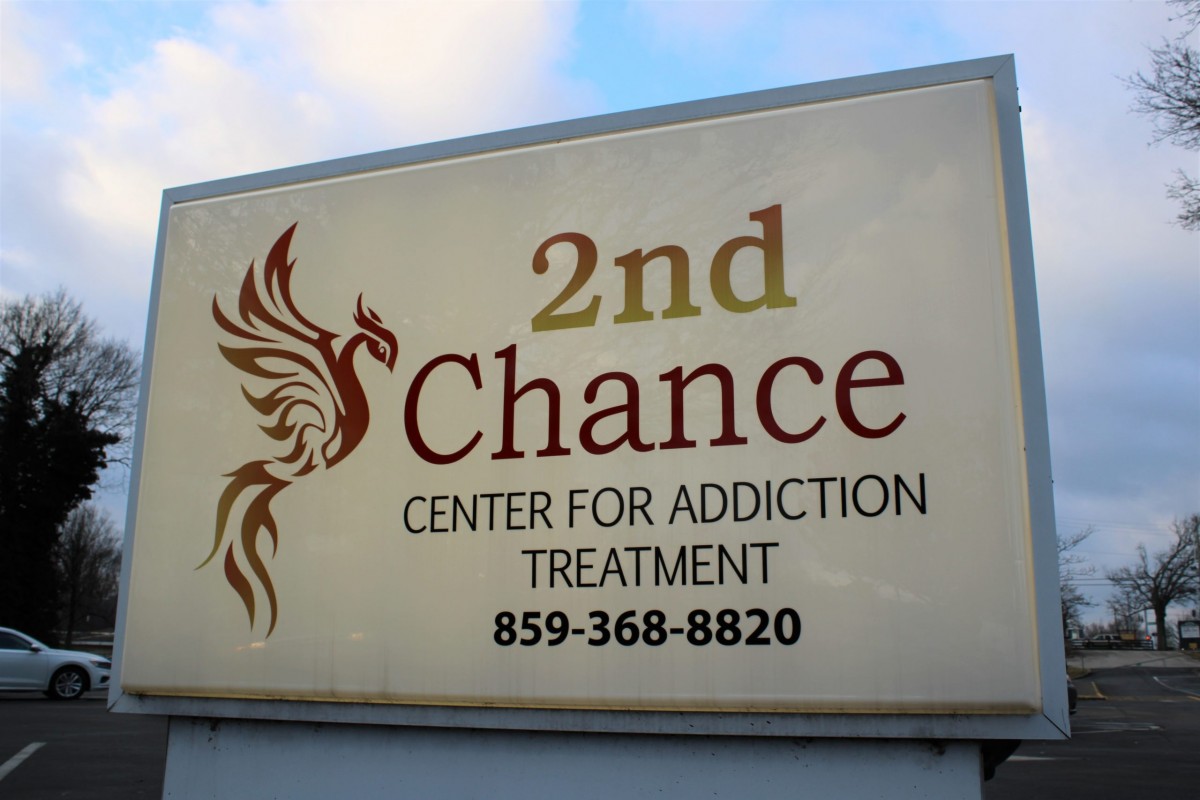There’s often a disconnect between statistics on opioid use disorders and the real people the numbers represent. That disconnect tends to trickle its way down to the policymakers tasked with enacting change and providing opportunities to those living with a substance use disorder. At least, that’s what Travis Stimeling, associate professor of musicology at West Virginia University, noticed of the West Virginia Legislature.
“I was sitting around watching [a livestream of] the Legislature, and they were debating what to do about the opioid epidemic in West Virginia,” Stimeling recalled. “And they kept talking about people like they were statistics, you know, they really weren’t talking about people like they were people.”
In response, Stimeling pulled together a variety of experts, including musicologists, journalists, academics, practitioners and those with first-hand knowledge of addiction, to detail the connection between opioid use and American culture in a book released in December 2020 through West Virginia University Press. “The Opioid Epidemic and U.S. Culture: Expression, Art, and Politics in an Age of Addiction” aims to challenge the dehumanizing language and attitudes Stimeling witnessed in West Virginia’s political system, while also highlighting creative portrayals of recovery and offering new perspectives on the opioid crisis.
The essays within the collection highlight the connections between recovery and expressive culture, or the way society conveys ideas and beliefs through art, according to WVU Press. These artforms have seen the impact of the opioid crisis on American culture, through the creation of documentaries, films and TV shows, music, poems and more.
Paige Zalman, a PhD student and program coordinator of the Research Apprenticeship Program at West Virginia University, was one of the experts Stimeling invited to be featured in the collection of work. Her excerpt examines images of addiction recovery and privilege in mainstream hip hop from 2000 to 2010.
Stimeling and Zalman spoke with 100 Days in Appalachia’s Editorial Assistant Kristen Uppercue.
This conversation with Stimeling and Zalman has been edited for clarity.
KU: Travis, can you start by describing the overall goal of the collection and what it features?

Travis Stimeling: The idea came out of a couple of things. One, there’s a history of addiction in my family, and so I’m sensitive to issues around substance [use], and I’ve done a lot of therapy myself to deal with the things that I’ve dealt with as a consequence of it. I [also] had current and former students who were in recovery, many of them in the creative arts, some that were taking music classes with me. And I couldn’t put together how our policymakers can be talking about people who were using and in recovery as if they were just numbers. These are people who are creating art, which is like the most human thing you could possibly do. And so I actually sat down one evening and I thought, ‘I bet I could do an edited collection on this idea.’
KU: Who is the intended audience for the collection?
TS: The book has lots of different audiences, and I think each essay will have a different audience. I really hope this book gets chopped up and sent out to lots of different folks because there’s some chapters in there that honestly I’d love to see in the hands of our legislators…to help them see the value of, one, our kind of artistic practices as a tool in the bigger recovery project, but also, two, to just look at the ways that we talk about people who are using and people who are in recovery and kind of do away with the terrible narratives.
And it’s interesting, in West Virginia particularly a lot of the talk about people who are dealing with opioid use, it’s the same way we talk about people who are poor. It’s the same way we talk about people who are chronically disabled. Really, it’s all of this same kind of marginalizing language. And it’s a very meritocratic language too. It’s like we’re all given the same opportunities, you know, why couldn’t you just pull up your bootstraps and go? And so, I think there’s some stuff in the book that’s going to get at that really well.
There are some essays that I think would be really useful for people who want to do something positive in their communities. Natalie Shafer, who is another former student of mine, she actually started this group called Voices of Hope right here in Morgantown, [West Virginia], which she describes as a recovery choir. And you could be in recovery from anything, it could be home insecurity, it can be poverty, it could be really anything, but it’s a safe place once a week for people to come together and make music together. And she lays out a really great example of how with very little funding, and very little musical support, you can create a place that is meaningful and that is community driven. She lays out a really great model for how to build something like that without using a top-down model to really let it take the shape of the community that’s keeping it up.
KU: I know that you both have a background in music. Can you just detail the cultural implications of addiction and drug use in music and how that can vary across genres?

Paige Zalman: In my piece, I’m looking at these representations in hip hop specifically and I think that hip hop was a good choice because there is that stigma with [the genre], in particular, about how it’s about drugs and sex. So, I was interested in exploring those sorts of representations, but also representations that we see from artists like Eminem and Macklemore, who are rapping explicitly about recovery from opioid use disorder and other types of substance use disorders.
Macklemore is the one that I focus on the most and his song [“Otherside”]. It’s a really powerful song where he is detailing how horrible his drug addiction was, but he specifically says something in the lyrics about how he was doing [drugs] because this is what all the “cool rappers” do. All the rappers that he’s listening to, it’s what they’re doing so he’s doing it too.
He’s a controversial figure in hip hop. He also is coming from this place of privilege and he’s coming from a background that’s relatable to middle class, white people. But I’m not sure if he’s necessarily the best person to be critiquing hip hop just because in that sense, he’s almost a little bit of an outsider. I mean, obviously hip hop transcends socio-economic class and has a huge following from people from every background, but if it’s a different kind of hip hop artist glamorizing drug use, I think it would be more powerful.
TS: My wheelhouse is country music and there’s not a lot of talk about [opioid abuse] in country music – at least not mainstream country music, which is historically, say the last 50 years, really marketed toward middle class housewives and puts a very cheery domestic vibe out into the world.
Country songs talk a lot more about drinking than they do about pills and always have. But if you go on the margins of country music, there are definitely people who are talking about it. That’s not to say that opioids haven’t been a problem in Nashville…It’s bound to be around, but I think there’s some genres that are a little less willing to put that vibe out there.
KU: Do you think the way addiction is portrayed in music affects listeners, and do you think that there should be a change?
PZ: I definitely think that it can be extremely detrimental for teenagers whose frontal lobes aren’t fully developed to be hearing these messages and internalizing these messages and thinking that it’s okay. You know, the glamorization and already feeling invincible as a teenager, those just aren’t good combinations. However, I do think that expression is important, and, for me personally, I love depressing music because it normalizes feelings that I have when I’m having a bad day. I like listening to sad music because it makes me feel like I’m not alone in that. So I think in that sense, sometimes music about addiction can be normalizing for people that struggle with it. It’s part of the human condition and I don’t want to necessarily censor it – that’s not necessarily what I’m advocating for in my piece by any means, rather just pointing out that it is detrimental.
TS: Well, I think [Zalman’s] piece just highlights the fact that there are artists out there who talk about going into recovery. And they make it seem like it is completely and totally possible, within reach. But you problematize the class notions that are there, you problematize the general issues related to access to healthcare. And you really do an excellent job of showing how making it seem easy is not accurate for the average person who’s dealing with this.
PZ: I definitely agree that these representations of overcoming these challenges are really, really important. The fact that there are famous people going through this, even though these are people who have experienced different levels of privilege and who have had probably way easier access to health care and social support in order to be able to be successful in that kind of new lifestyle, I still think that for the listener, that does convey this really important message that it is possible and you don’t have to live that way forever. And I think that that’s really, really meaningful for people who are struggling.
KU:I was thinking about your piece in particular, Paige, and the way that our country has reacted to different drug crises and how race plays a role in our response, whether that be in the way that we talk about people who have struggled with addiction or the way that they are treated in the culture more broadly. Do you see any of those same racial differences in the way that addiction is discussed in music?
PZ: I wasn’t able to find an artist of color who is in the mainstream hip hop scene that has outspoken about overcoming their addiction. The two examples that I do use who talked about that are white men, Eminem and Macklemore.
I think that’s pretty significant in that it seems like it’s a stigma-related thing, where it’s totally okay for a white man to go against the grain and be vulnerable in a way that we don’t normally see hip hop artists being. Whereas, for people in the African American community, there’s likely a lot more stigma in addition to all of these issues with access to healthcare. The fact that there aren’t people of color rapping about recovery that I could find is significant in and of itself.
KU: How do you think that this collection will impact the way that people see drug use and see addiction through entertainment?
TS: I do hope that it helps consumers of art…There’s some great things in the book on documentary film and on feature film, and on popular literature, things like that, that I think would be really helpful for folks to read. I’m not sure it’s going to have much of an impact in creation, but it might, you never know. I personally would love to see more.
I read a lot of comic books, that’s my not-so-secret passion in life, and there have been really great comic discussions of addiction and there have been some really terrible ones over the years. I would love it if there was potential for this book to shape, to add nuance to things…I hope that admitting that this leads to better representation, not no representation, right? And I think that’s really important.
This discussion was originally published in The Opioid Effect, a collaborative project between faculty and students at Morgan State University and West Virginia University to report on the impacts of the opioid epidemic, particularly on children and families, in Baltimore, Maryland, and Appalachia.



